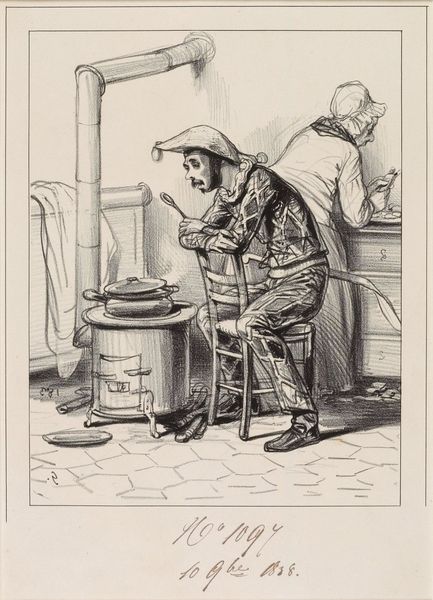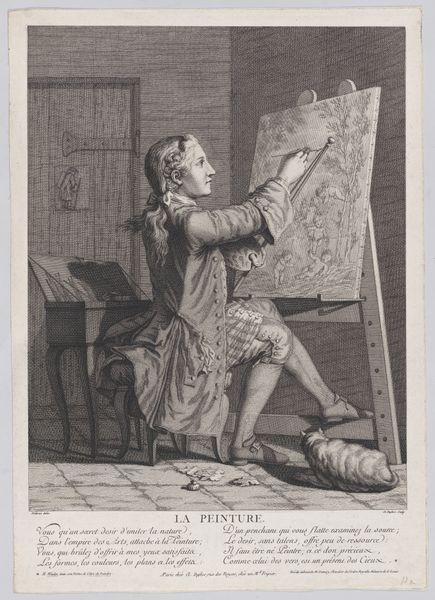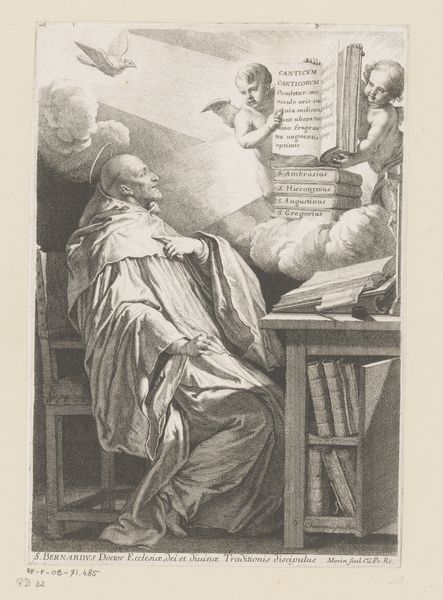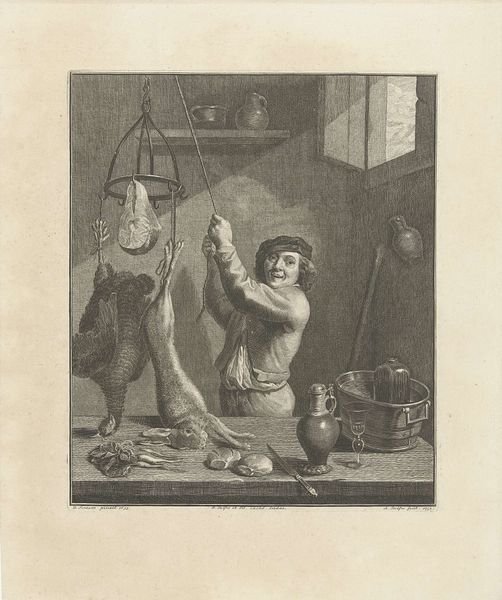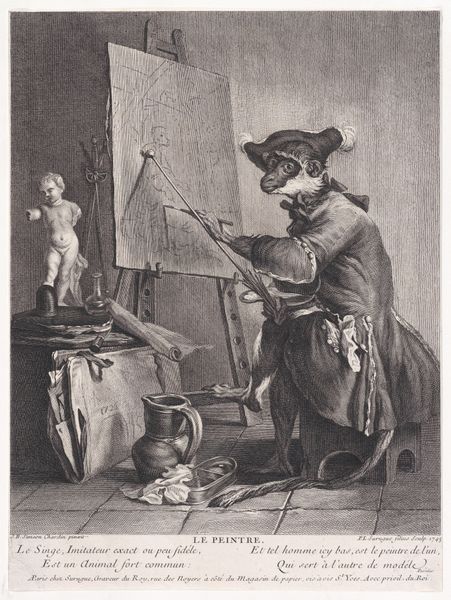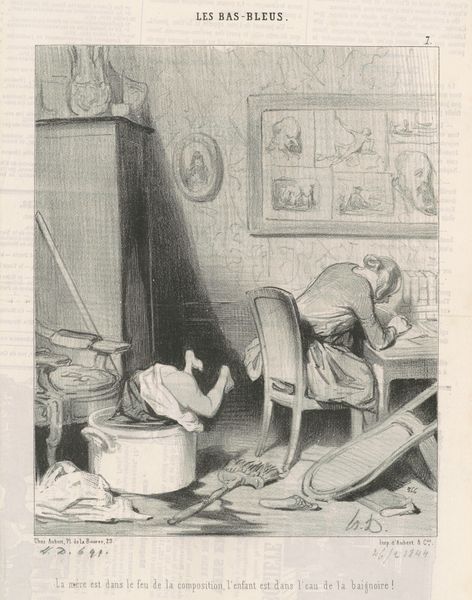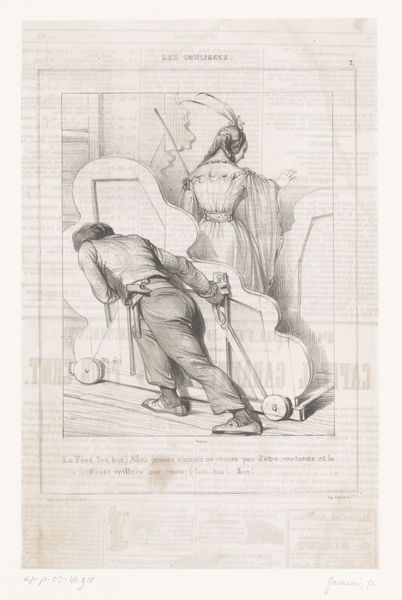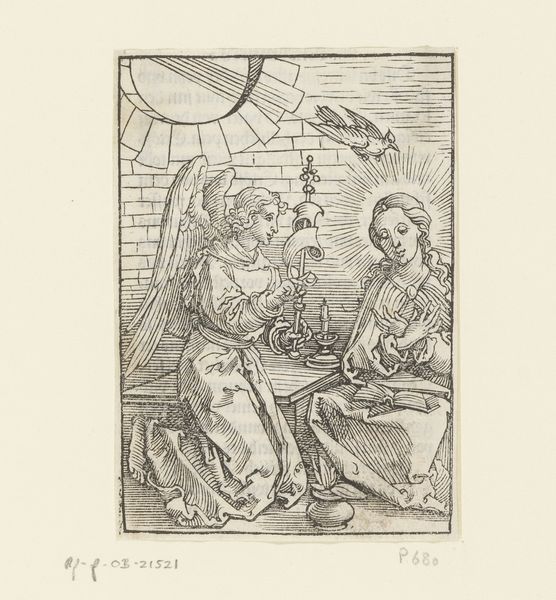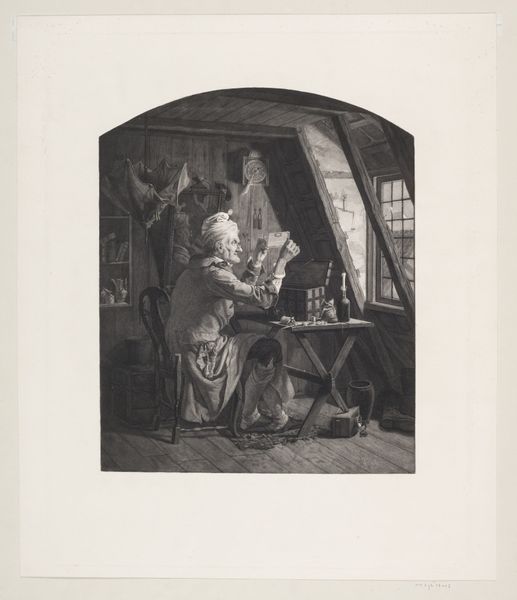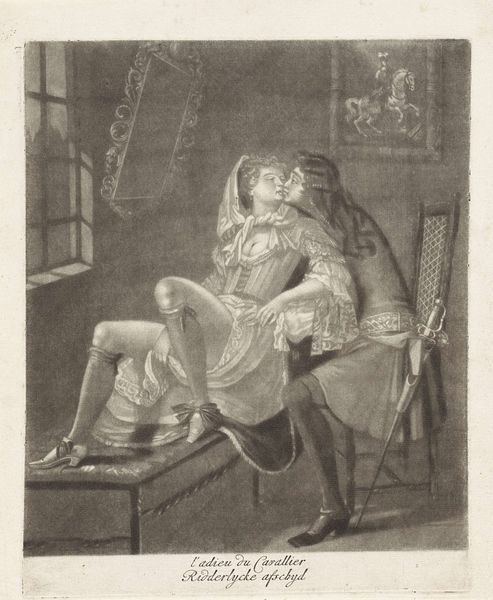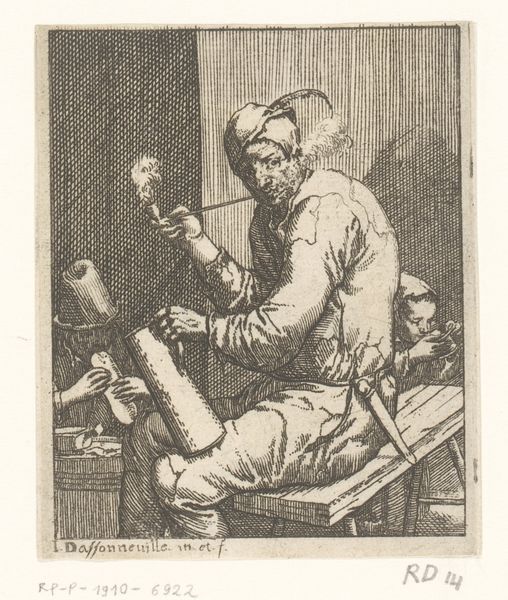
lithograph, print, pen
#
narrative-art
#
lithograph
# print
#
caricature
#
figuration
#
romanticism
#
pen
Dimensions: height 275 mm, width 214 mm
Copyright: Rijks Museum: Open Domain
Curator: We're looking at Honoré Daumier's "Caricature of a Man with a Headache," a lithograph dating back to 1833, now held at the Rijksmuseum. Editor: The immediate impression is chaotic! It’s almost overwhelming, visually enacting the very headache it depicts. The dense cross-hatching gives a raw, almost unfinished feel. Curator: Indeed. Note how Daumier masterfully uses the lithographic stone to create depth and texture. Consider, too, that Daumier produced lithographs for mass consumption. Here, line becomes form through the reproductive means afforded by the industrial press. Editor: Absolutely. The context of production is crucial. Daumier, known for his social and political commentary, wasn't just making fine art prints, he was actively participating in the public sphere. Lithography allowed his critique to reach a broad audience. How interesting is the juxtaposition between "high art" themes and this kind of visual and narrative demotic work! Curator: Precisely! The allegorical figures, hammering and ringing bells atop the poor fellow's head, transform a mundane malady into a symbolic performance. The grotesque distortion, rendered in minute detail, is captivating, is it not? Editor: Captivating but also revealing of Daumier’s social awareness. His engagement with print as a process mirrors and informs his depictions of industrial tumult, labor, and mental strain. How easily reproducible! What statement might he be making here, and what is the subject matter of the pain caused to him? Curator: By framing a simple headache in such extravagant terms, Daumier elevates it to a site of narrative imagination and Romantic fervor, almost mocking, as is the point of caricature. The artistic merit lies not just in what’s depicted, but also how it is depicted: line, form, tonal control. Editor: For me, its artistic achievement resides more specifically in how Daumier, in 1833, appropriated available technical media to capture human experiences. It points to the conditions under which art can speak about the world beyond aesthetics, form, or symbol. Curator: Very insightful! It is that dialectical interplay that gives this lithograph its staying power. Editor: A rather painful print, literally. Thanks to Daumier for translating his view of mental duress in Romantic, tangible terms!
Comments
No comments
Be the first to comment and join the conversation on the ultimate creative platform.
